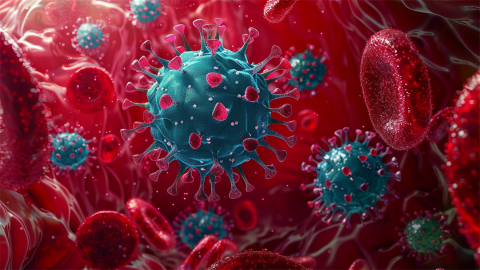How long can the influenza A virus survive outside the body?
The influenza A virus generally refers to type A influenza virus. Under normal circumstances, outside the body, if the environment is at 100°C, the virus can usually survive for about 2 minutes; if the environment is at 56°C, it can mostly survive for about 30 minutes; and in environments above 30°C, the virus typically survives only for several hours. The detailed analysis is as follows:
The differences in survival time of the influenza A virus outside the body under different temperature conditions are mainly due to the temperature sensitivity of its protein structure and nucleic acid stability. High temperatures cause the virus to lose its ability to recognize host cell receptors. Additionally, the nucleic acid chain breakage and loss of enzyme activity caused by high temperatures completely destroy the virus's genetic material, rendering it inactive within 2 minutes.

Although 56°C does not reach the extreme conditions necessary for instantaneous inactivation, sustained thermal stress will still gradually disrupt the hydrogen bonds and hydrophobic interactions of the viral capsid proteins, while accelerating the degradation of viral RNA, typically resulting in loss of infectivity within about 30 minutes. In environments above 30°C, although the virus can maintain its basic structure, increased temperatures enhance the activity of nucleases in the host environment, accelerate lipid membrane oxidation, and promote aggregation and precipitation of viral particles. These factors collectively cause the virus to become inactivated within several hours due to physical damage and loss of biological activity.
The influenza A virus survives longer in cold, dry, dark, and non-porous surface environments, while it survives for shorter periods in hot, humid, illuminated, and porous surface environments. Understanding this information helps us implement more effective prevention and control measures, such as regular cleaning and disinfection, maintaining good ventilation, and avoiding contact with contaminated surfaces, to reduce the risk of viral transmission.





